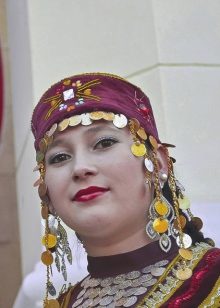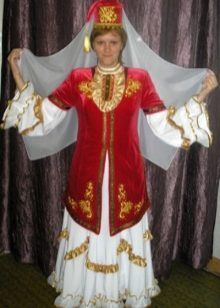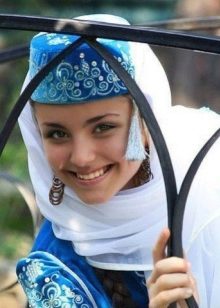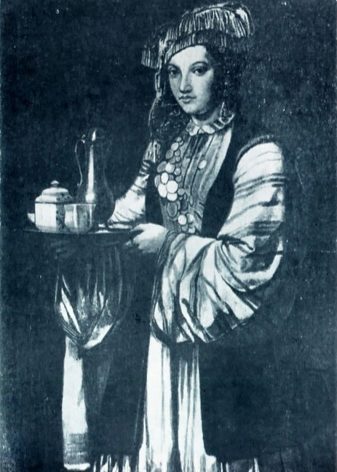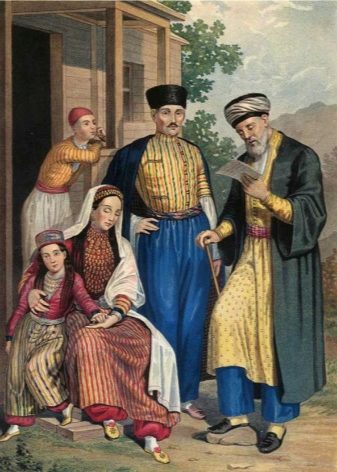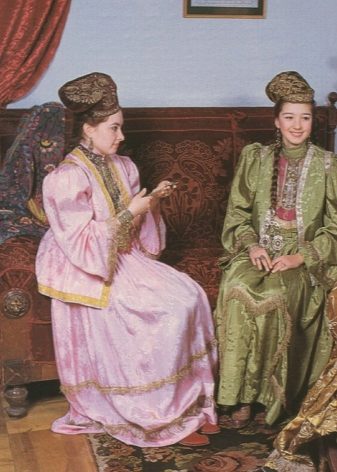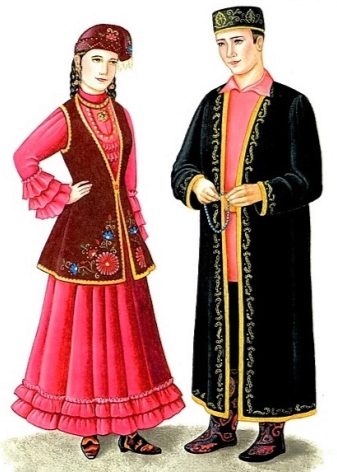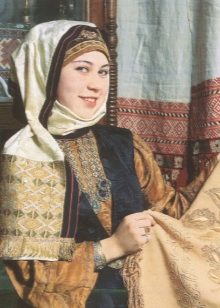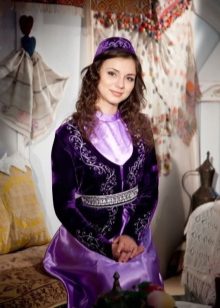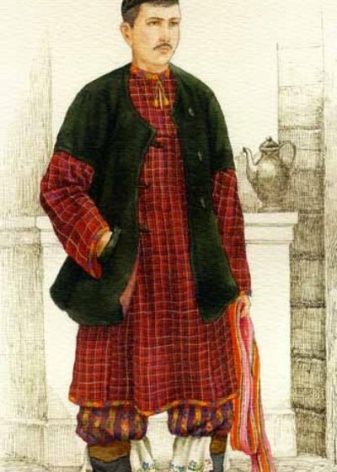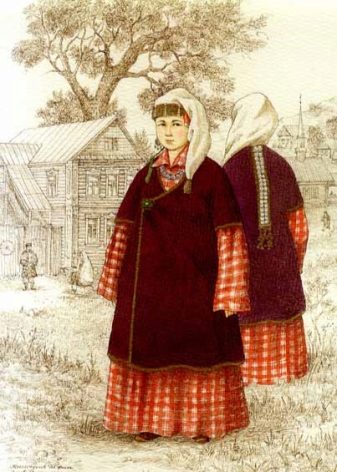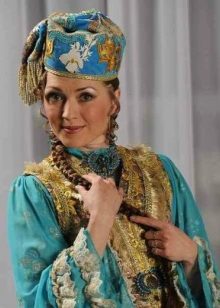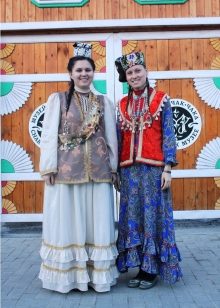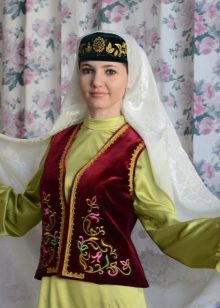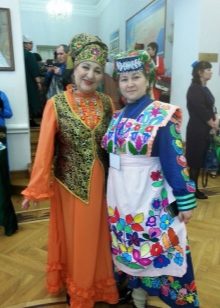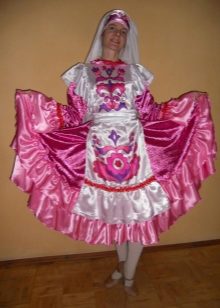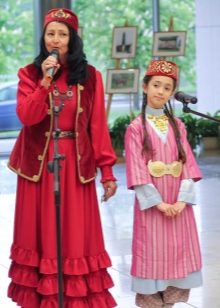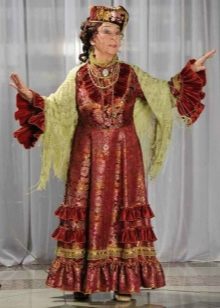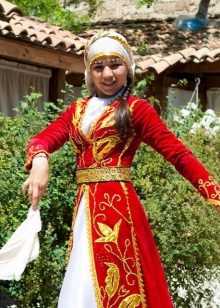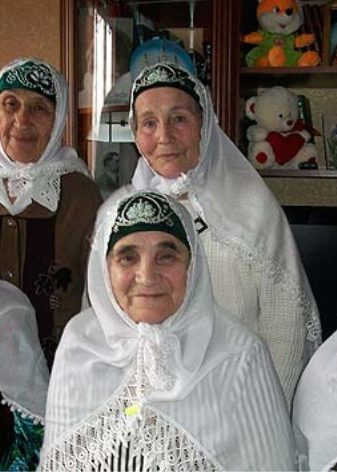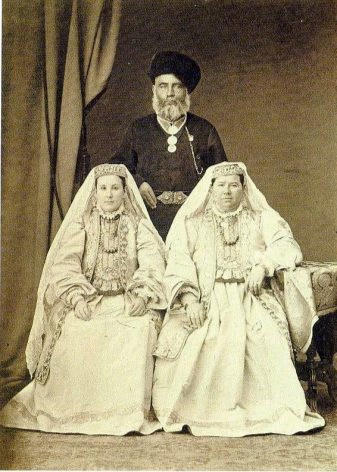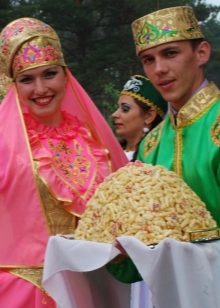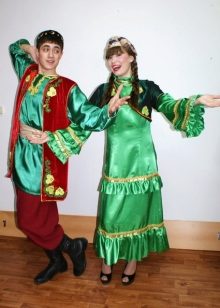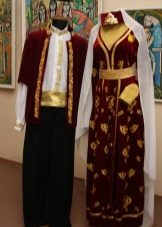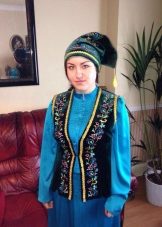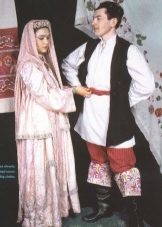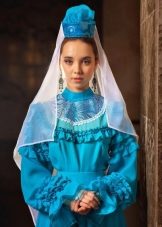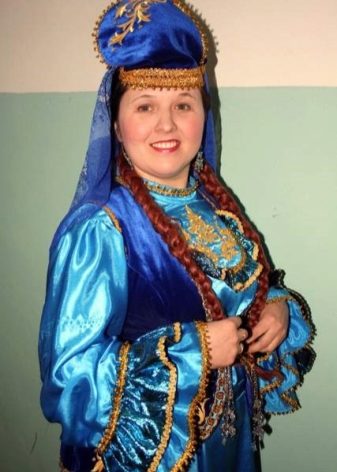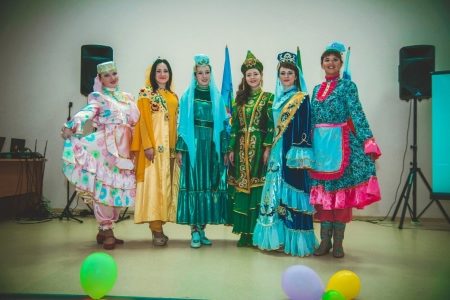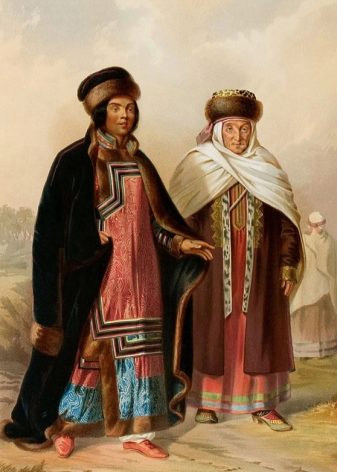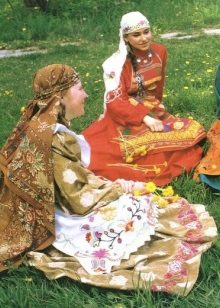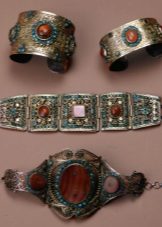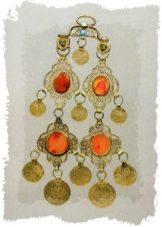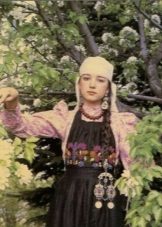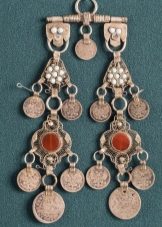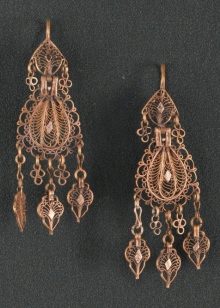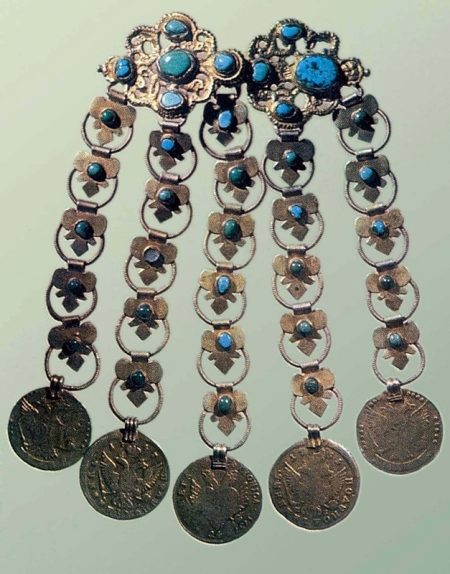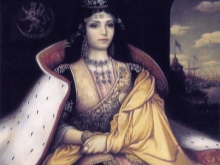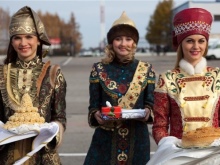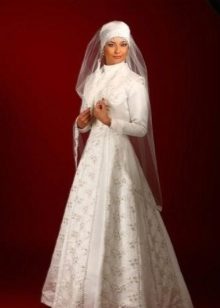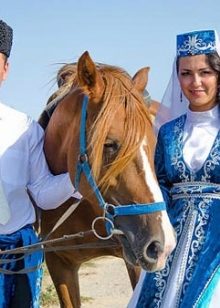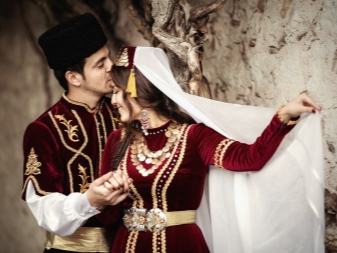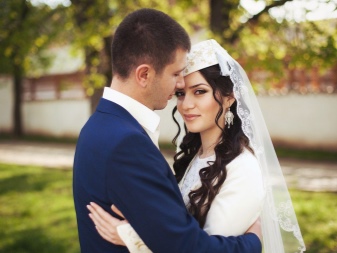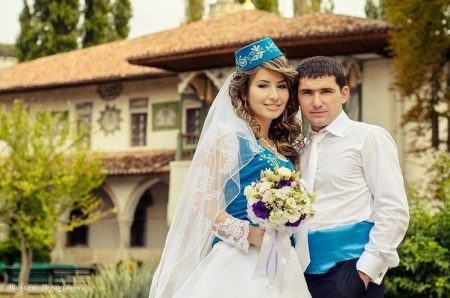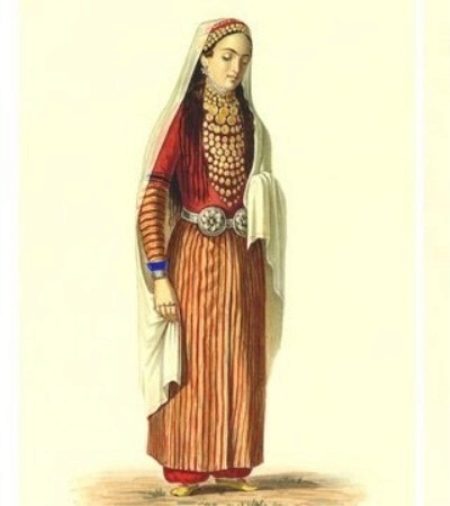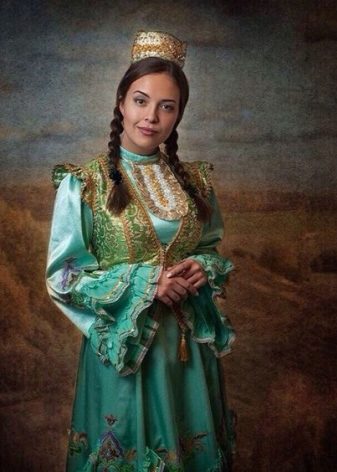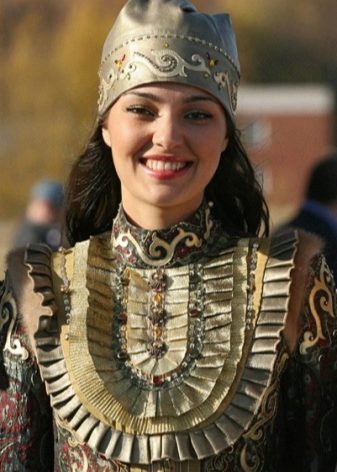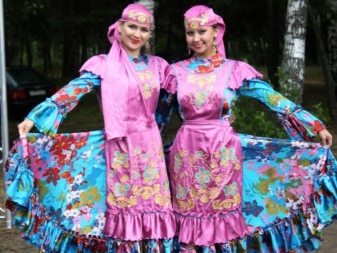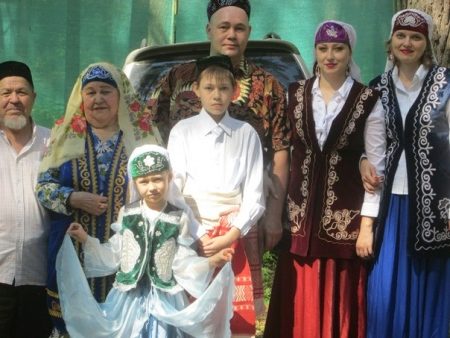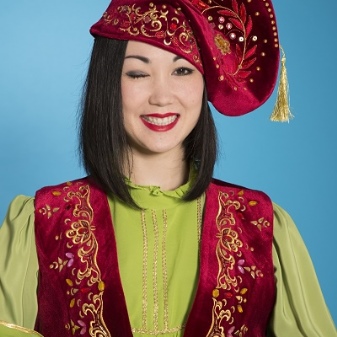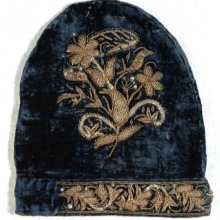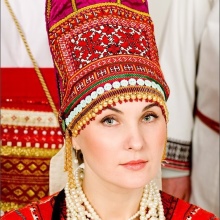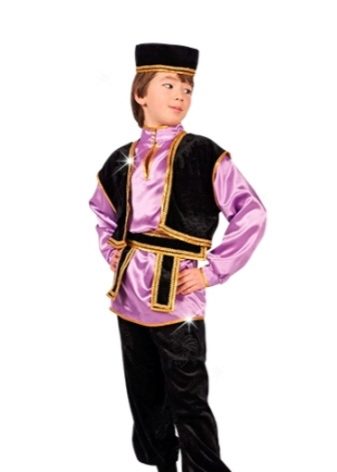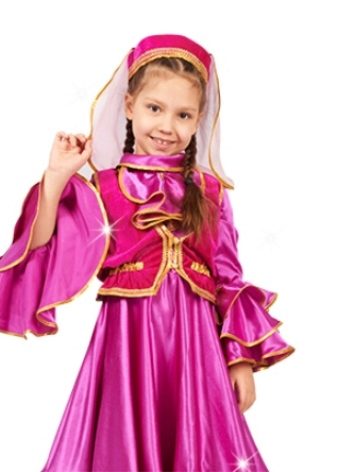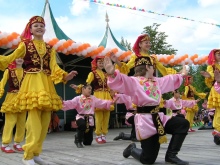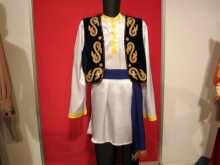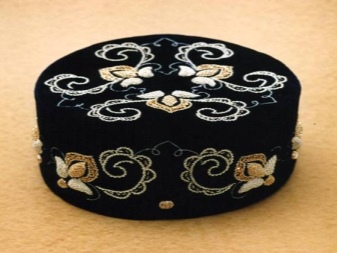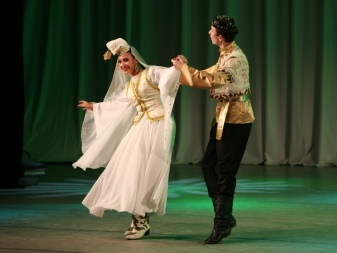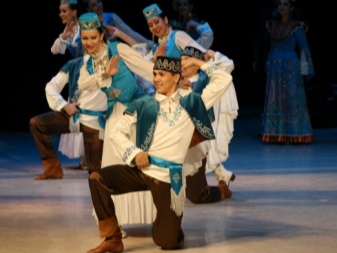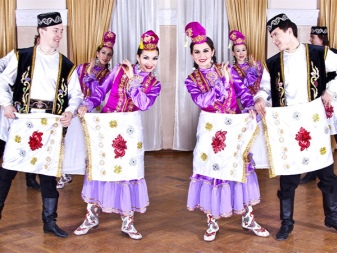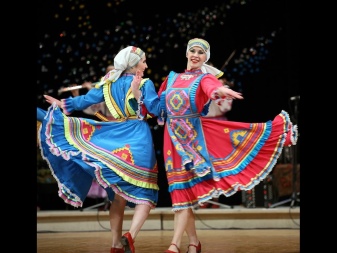Tatar national costume

National costume is a unique feature of every nation, which keeps some secrets and traditions. Many people do not even know the subtleties and nuances of the clothes of their ancestors. However, the Tatars have always honored their history and thoughtful of customs. Their outfits are famous for their rich canvases and exquisite fittings. They are easily recognizable, and for many are in demand in our time.
A bit of history
Of course, the national Tatar costume has its own history. It dates back to the 18th century, but the last changes were made a little later. This piece of clothing was constantly adjusted, but the similarities remained intact.
It should be clarified that much depended on the area of representatives and a particular religion. Had the biggest impact Volga Tatars and of course Islam.
At the Crimean Tatars the costume was significantly different. They styled wide skirts that emphasize voluminous hips. In other regions, the dresses were wedge-shaped.
This nation believed that the soul of a person leaves the body through some holes and holes. Therefore, they treated the cuts and torn materials with particular trepidation. Tatars believed that they could save lives only magical amulet. For this edge or any cuts are processed with special patterns. Previously, these were arrows, but they were soon replaced by curls.
Dresses were decorated with an ornament only in certain places. The pelvic zone was considered secret and very intimate, so it was never treated with anything. Breast was perceived differently, because women fed her children. That is why this area has always been decorated with magic signs in the form of an ornament.
The classic national costume is a union of bloomers and a shirt-dress. From above the dressing gown or caftan was usually put on. Also, the outfit loved to complement light outerwear made of hemp or flax. This product did not have a lining, but called it a choke. As for women, they often wore vests or aprons.
Tatar outfits have always stood out among others for their brightness and abundance of jewelry.
Description
Colors and shades
For Tatars, the color of their outfits is very important. They do not reflect fashion trends or color type features, but much more serious things. A certain connotation can tell a lot about a person’s position in society or his religious preferences. In the same way, it was possible to identify people who are in marriage or age. It is worth saying that the color range strictly separates even the nomadic and agricultural peoples.
In the 18th century, much attention was paid to red. He talked about his master's generosity, and later began to indicate the financial viability. However, in the next century it was no longer taken seriously. They began to wear red clothes for some holidays and events, as it was considered elegant.
Many Tatars white color symbolizes mourning or old age. Such outfits were usually worn by women who had left the reproductive age and people who were going to the funeral.
Now in the national costume you can find the brightest and most vivid colors. Quite often, emerald, lilac and blue hues are used in men's and women's robes. They always combine with contrasting tones and bright patterns. The most common embroidery is gold or yellow. She makes the outfit much richer and more interesting.
Fabrics
Formerly, velvet was used for tailoring. The edges and hem loved to decorate with fur.Animal hair was often repeated in headdresses. Gradually, clothing became lighter, and preference was given to other fabrics. Woolen, cotton and silk cloths are considered the most popular. Camisole sew from brocade, which is covered with small patterns. Sometimes you can find options of velvet and some elastic materials.
Nowadays, modern outfits are most often sewn of silk or satin. The fact is that this fabric is very light and pleasant. In addition, it conveys the depth of the shade and makes the image richer. It is worth saying that the Tatars always use combined canvases. Such a contrast makes the image more original and more interesting.
Now there are no strict and sharp restrictions. The wishes and characteristics of people, as well as their tastes are taken into account. Of course, the cut and certain details remain the same.
Cut and decorative seams
The main feature of the Tatar costume was its trapezoidal shape. Representatives of this nationality wore wide shirts resembling tunics and bulky outerwear with a solid back.
In the classical shirt there were no shoulder seams, but it was cut off from straight, but bent linen. Also present were crotches, unusual wedges that were inserted at the sides and an incision in the chest. Some types of Tatars had a stand-up collar. The male model was very wide and barely reached the knees, and the female almost touched the ankles.
Pants in national costumes are rather voluminous, and outerwear has always been hinged.
It is unlikely that you will meet any product of this people without decorative seams. There are several types of patterned weaving.
- The first is a "fabric with a pattern of randomness." Thick threads form an ornament of stripes, and they are mainly decorated with belts and scarves. The threads themselves for the seams are most often multi-colored.
- The second type is the “Cyprus fabric”. Here duck threads were superimposed on the main thread and completely closed them. You can learn these seams by gaps that resemble small steps.
- The last type is “board”. Threads are repeated on the face, then on the wrong side. They look very original than they even resemble embroidery.
Accessories and decorations
It was easy to judge the well-being of the family by various decorations. Not only was the woman assessed, but the couple as a whole.
Men usually wore rings with large stones and original buckles. The girls main decoration was considered nosoknik. They could be of different colors, materials and even shapes.
It should be said that among the Tatars one can hardly meet a young lady without earrings. Ears pierced at the age of three or four years, so the girls got used to the earrings from childhood. These decorations are worn to old age, and they are also a traditional part of the Tatar costume. There were some classic forms of earrings, but many of them were borrowed from other nations.
Do not forget the ladies and about jewelry for the neck. However, most often they served for quite practical purposes. The ladies covered the products with a deep cut on the shirt.
Another original accessory can be considered a sling. She was a tape that was worn over her shoulder. Muslim women often had pockets there in which they stored texts from the Koran.
Wedding dress features
The bride's dress should be closed and certainly long. A girl can be in snow-white outfit or give preference to traditional bright colors. Among them are cornflower, burgundy and green.
Very often the product complements the camisole of the above colors. At the feet of a young lady can wear shoes or lightweight boots, which are called a sitcom. On the head is usually flaunted bedspread of lace or calfak. A large number of bracelets, large earrings and a ring are welcomed. All these decorations will indicate a high status of the bride.
In men, everything is much simpler and more concise.They buy a classic suit, which they like to decorate with different ribbons, and they also wear a national headdress. If the wedding requires strict rules, then the groom favors the shirt and velvet jacket.
Gender Varieties
Female
Women's national costume includes a shirt, a bottom bib and pants. This outfit is suitable for any occasion and is the basis.
In the early 20th century, girls began to sew dresses that look more elegant. The bottom bib was attached to the product without fail. He attached to the neck or shoulders with the help of thin straps. This bandage is always decorated with some ornaments.
For some Tatars, an apron was considered another everyday detail. Someone wore it exclusively with work clothes, and someone wore only on holidays.
As for outerwear, camisoles and bishmets were always in great demand. Camisole is a short and fitted vest. Bishmet is a long coat with a narrowed back. It was often decorated with fur, and instead of the usual buttons, they sewed a buckle from silver, which served as a decoration for the attire.
Unmarried girls wore a hat or kalfak worn with braids on their heads. Women in marriage had to cover all the hair and back. Therefore, haircuts and bedspreads were always included in hats.
Child
Children's costumes are almost no different from adult models. However, they have more vivid details.
- The costume for the boy consists of an elongated shirt with wide sleeves. For the convenience of the child, the product is often supplemented with cuffs. The obligatory part of the set is a camisole, embroidered with various patterns. Pants are usually wide and have a contrasting shade that does not take away attention from the shirt. Boots are usually worn on feet, and in summer, lighter shoes.
- The dress for the girl is a dress with several tiers. It covers the shoulders, neck and sleeves, and also has a maximum length. A national headdress will certainly flaunt on the head, and a translucent veil gently falls off it, which completely covers the entire back. Dresses are always distinguished by bright colors and interesting patterns.
Male
A men's suit must be a wide shirt, which has crotches under the arms and raglan sleeves. It should be elongated, and pants must be wide.
There are two types of clothing that can be characterized in one detail.
It can be with a fitted or with a straight back. To the first option can be attributed camisole, bishmet, choba. Bishmet is a thick coat, and Chob is light. Camisole is the usual fitted vest.
Chikmen, Djilan and sheepskin coats belong to the second variant. Chikmen is a demi-season outfit, and he also comes with a fitted back. Dzhilyan represents a dressing gown with a small collar, which is worn in spring and summer. Sheepskin coat is considered winter clothing made of fur.
A mandatory element of clothing Tartar is a belt. Previously, rich men used a belt of silk, which was decorated with a fringe of silver or gold threads.
The skullcap is considered to be the main headdress of a man. It is a molded cap, richly decorated with colored embroidery.
Modern option
Now almost you will not meet the girl in a shirt and a jacket. The ladies wear closed A-silhouette dresses. They have a stand-up collar and flounces on the sleeves. Of course, there are exceptions, but this outfit is the most popular. As for the headdress, it does not change.
For men, everything remains the same, but some details and motifs look more modern and stylish. In modern dance, combinations of the traditional national costume are used, but with notes of new time. Men always perform in wide trousers that are tucked into boots. Shirts and camisoles remain the same, and sometimes a belt is added to the dress.
Dresses for girls can have different variations, but they always remain closed. Sleeves are often embellished with frills. For dance costumes used the brightest and juicy shades, as well as original and rich embroidery.
